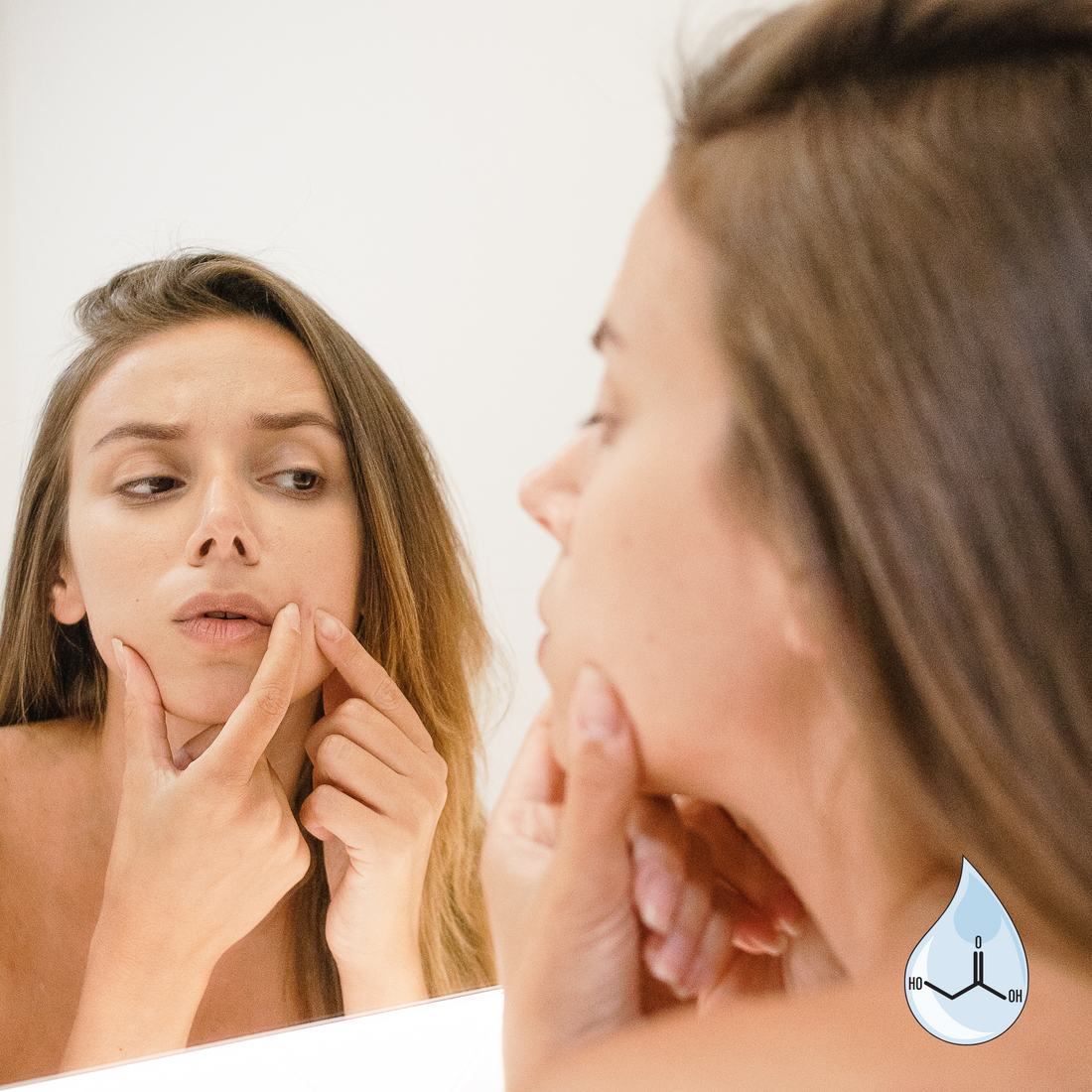Glycolic acid is very popular in the world of skincare—loved for its ability to exfoliate, brighten, and smooth the skin. But have you ever noticed that when you stop using it, your skin seems to rebel with breakouts or dullness? It’s not just your imagination—there’s a physiological reason behind it.
Why Glycolic Acid Works So Well
Glycolic acid is an alpha hydroxy acid (AHA) that works by breaking down the bonds between dead skin cells, allowing them to shed more easily. This promotes faster cell turnover, which helps to keep pores clear, fade dark spots, and smooth fine lines.
The Dependency Effect: What Happens When You Stop
While your skin doesn’t become addicted to glycolic acid in the traditional sense, it can become reliant on the accelerated exfoliation process. Here’s what’s happening beneath the surface:
-
Slowed Cell Turnover
- With regular glycolic acid use, your skin gets used to a faster shedding cycle. When you stop, the skin’s natural cell turnover slows back down, leading to a buildup of dead skin cells on the surface.
- This buildup can make your skin look dull, rough, and uneven.
-
Clogged Pores and Breakouts
- The excess dead skin cells can mix with sebum (oil), leading to clogged pores, blackheads, and breakouts.
- This can feel like a “rebound” effect, but it’s really just your skin adjusting to its natural, slower exfoliation process.
-
Temporary Imbalance in Oil Production
- Glycolic acid helps regulate oil production by keeping pores clear. When you stop using it, your skin might go through a temporary imbalance, producing more oil than usual, which contributes to breakouts.
What Happens with Prolonged Use of Glycolic Acid?
While glycolic acid can deliver results, prolonged or excessive use can lead to skin issues, especially if not balanced with proper hydration and barrier support:
-
Compromised Skin Barrier
- Over time, frequent exfoliation can weaken the skin’s protective barrier, making it more prone to irritation, redness, dryness, and sensitivity.
- A compromised barrier means your skin loses moisture more easily and becomes vulnerable to environmental aggressors like pollution and UV rays.
-
Increased Sensitivity and Redness
- Prolonged use can cause chronic low-grade inflammation, leading to persistent redness, stinging, or burning sensations—even when using mild products.
- This can mimic or exacerbate conditions like rosacea or contact dermatitis.
-
Photosensitivity (Increased Sun Sensitivity)
- Glycolic acid thins the outer layer of dead skin cells, which can make your skin more sensitive to UV damage.
- Without diligent sun protection, this increases the risk of hyperpigmentation, sunburns, and premature aging.
-
Over-Exfoliation Syndrome
- This occurs when the skin is exfoliated faster than it can regenerate, leading to dryness, flakiness, tightness, breakouts, and even skin peeling.
- Ironically, this can create the appearance of “dull” skin, the very issue glycolic acid is often used to treat.
How to Transition Off Glycolic Acid Without Breaking Out
If you’re planning to reduce or stop using glycolic acid, try these tips to minimize the adjustment period:
- Gradually Reduce Usage: Instead of stopping abruptly, reduce the frequency of application to allow your skin to adjust.
- Introduce Gentle Exfoliation: Use Petal Purity Exfoliating Cleanser or Sweet Orange Exfoliating Cleanser which are milder but still help with cell turnover.
- Focus on Barrier Repair: Hydrating serums and moisturizers like Nordic Boost or Rosey Cheeks can help strengthen your skin’s barrier as it recalibrates.
- Be Patient: It can take a few weeks for your skin to rebalance. Temporary breakouts are normal during this phase.
While glycolic acid is an effective skincare ingredient, over-reliance and prolonged use without proper skin support can lead to long-term sensitivity and barrier damage. The key is to maintain a balanced routine with gentle exfoliation, proper hydration, and a focus on long-term skin health.

